Review: The Garmin inReach Mini 2 Adds Peace of Mind for Hiking, Camping and Off-Grid Adventures
A satellite phone could be the difference between you receiving an emergency rescue in a dire situation, or you never returning from the backcountry. If that sounds dramatic or intense, it’s because it is. Backcountry adventuring should be taken seriously, and a big part of that is preparing for wilderness communication where cell phones don’t work.
More so, route planning, navigation and pre-SOS communication are key to not requiring a rescue at all. The Garmin inReach Mini 2, a tiny satellite phone with GPS capabilities, allows you to communicate with others (not just emergency response teams) in the backcountry, follow a GPS route, use a compass, and reroute yourself if you get lost. For the backcountry adventurer, a device like this is a quintessential piece of hiking gear.
In my Garmin inReach Mini 2 review, I cover all of those features with the help of Christophe Noel, a professional Himalayan adventure guide and owner of Far Xplorer, and Tim Mastic, National Park ranger and certified wilderness first responder.
What is the Garmin inReach Mini 2?
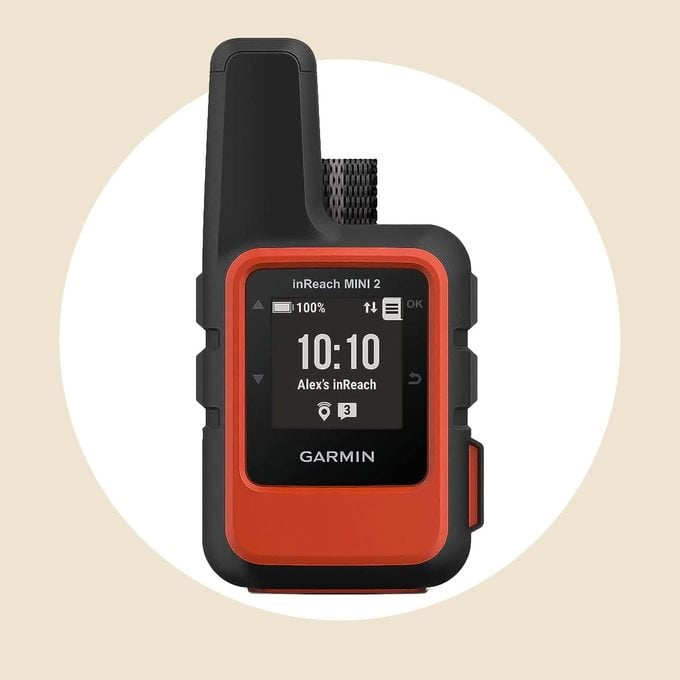 VIA MERCHANT
VIA MERCHANTWe Tried It
Garmin inReach Mini 2
Global satellite coverage with navigation to keep you connected when off the grid.
The Garmin inReach Mini 2 is a personal satellite communicator and GPS device. It also functions as an SOS beacon, allowing users to communicate with emergency response teams for rescue.
Not only does the inReach Mini 2 enable you to communicate while in remote, backcountry locations where there is no cell service or Internet, it also serves as a personal navigator so you can avoid getting lost or off-trail.
Aside from the above features, ardent adventurers rave about the inReach Mini 2 because of its impressively small size, light weight, and long battery life.
Garmin inReach Mini 2 Features
Here’s an in-depth look at what exactly the Garmin inReach Mini 2 can do:
Two-Way Satellite Communication
The Garmin inReach Mini 2 utilizes the Iridium satellite network, which was commissioned in the late 1990s by Motorola, Noel says. Noel explains that the network today consists of 66 low-earth orbit (LEO) satellites at about 500 miles overhead. They are so numerous because they orbit so low and can only see about one-third of the earth’s surface at any given time, he says.
The benefit, however, is that the user has a greater chance of being within view of a satellite compared to other satellite systems. “Some systems use fewer satellites, like the Inmarsat satellite network,” Noel says. “At 36,000 miles overhead, they use fewer but see more of the earth, but signal latency is a bigger issue.”
As for efficacy, I can vouch for the inReach Mini 2. I live in a camper van and go hiking alone frequently, often heading out for 10- to 16-mile hikes on my own in remote places. I always bring my Garmin inReach Mini 2 so that I can message my partner if I find myself in trouble or if I know I’m going to be late.
Luckily, I haven’t found myself in trouble on the trail yet, but I have had to message him that I will be arriving late due to getting lost and sheltering from weather. It gives him peace of mind that I’m okay, and it prevents me from having to rush back to the trailhead.
SOS Contact
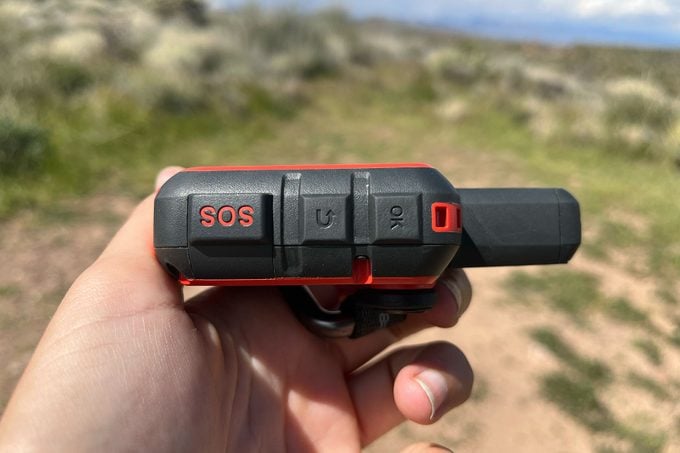
The SOS feature is as important to understand as the two-way satellite communication. You do not want to find yourself in a situation where you need an emergency rescue but don’t understand how to use the SOS feature on your device. “The simple understanding is that you push the SOS button and some mysterious rescue team shows up,” Noel says. But that is not exactly the case.
When you push the SOS button, this is what happens, according to Noel:
-
The SOS distress signal goes to the closest Iridium satellite, back to earthbound towers, and eventually the signal reaches an organization called GEOS, which is an international emergency dispatch center. This GEOS organization also works with other agencies, including the Garmin Response Team, SPOT, and Inmarsat devices depending on who the device maker contracts with.
-
Once GEOS gets the distress call, they use their registry to see who owns the device. They may try to contact the owner listed on the device, and the emergency contacts listed with the registry. This step is to ensure the device isn’t on your kitchen counter and accidentally deployed in SOS mode. Once they determine it’s an authentic SOS message, they then use the two-way comms feature to send a message to the device in the field. “The open line of communication between the GEOS rep and the person in the field is critical to a good rescue,” Noel says.
-
Once the location of the emergency is established via GPS, the GEOS team then determines which emergency response authority needs to be notified.
Noel has used the Mini 2’s SOS feature in dire situations and has had success. In 2017, he was traveling with a group on a remote motorcycle route in Chile. One rider crashed head-on into a car on a gravel road, Noel recounted, and his group was located a six-hour drive from the nearest small clinic. “We used an inReach to establish a two-way dialog with GEOS (an international emergency response center), who in turn contacted Chile’s federal police. A rescue helicopter was on the scene within 45 minutes,” he says.
In 2018, Noel was on assignment for Red Bull with a paragliding athlete “in the most remote corner of the Atacama Desert in Chile.” The truck they were traveling in had died at 17,000 feet on a mountain. “Far from any well-used road, we again contacted GEOS via the SOS button who, again, called the federal police [in Chile]. We were at the police outpost within 12 hours after a midnight rescue. Two way comms again were essential.”
GPS Capabilities
The third most important feature of the Garmin inReach Mini 2and what separates it from many other satellite communication devicesis that it works as a personal GPS device, too. This means that you can preload you route onto the inReach Mini 2 and use it as a guide in the backcountry, thereby reducing your risk of getting lost and requiring an emergency response in the first place.
The ability to use it as a backcountry GPS is a standout feature, Mastic says. “Via Garmin’s Explore app, users can pre-plan their routes and load them onto their InReach Mini 2, ensuring they stay on-trail,” he says. “In addition, The InReach Mini 2 has “TracBack Routing” feature that allows users to track their unplanned routes and will navigate users back along their route if they happen to get lost.”
You can preload up to 100 courses (routes) on the Mini 2, and up to 1,000 individual waypoints, favorites, or locations.
Live Tracking and Location Sharing Capabilities
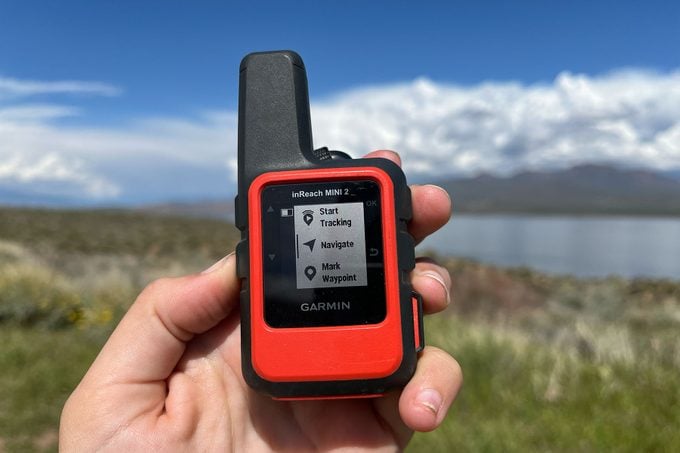
The inReach Mini 2 supports live location tracking. If you desire, you can enable live tracking and share that information with a friend or family member. The tracking feature pings your device at predetermined intervals (every 10 minutes is the default setting) and saves the coordinates as a breadcrumb trail. With an active inReach subscription, you can upload this information to your MapShare page on the device, which is then shared with someone back home. This can offer peace of mind for your friends and family.
Long Battery Life
For its size and weight, the battery life of the inReach Mini 2 is quite impressive. That being said, it depends largely on how you use it, Mastic says, and as a user, I can back that up. The inReach retains most of its battery power when it’s just sitting inside my camper van, not being used. If I enable live tracking while hiking alone, that sucks more battery, enabling tracking and using it as a GPS shortens the battery life substantially.
Per the Garmin website, the battery life is also determined by whether you have a clear view of the sky or if you’re in tree cover.
Bluetooth Connectivity
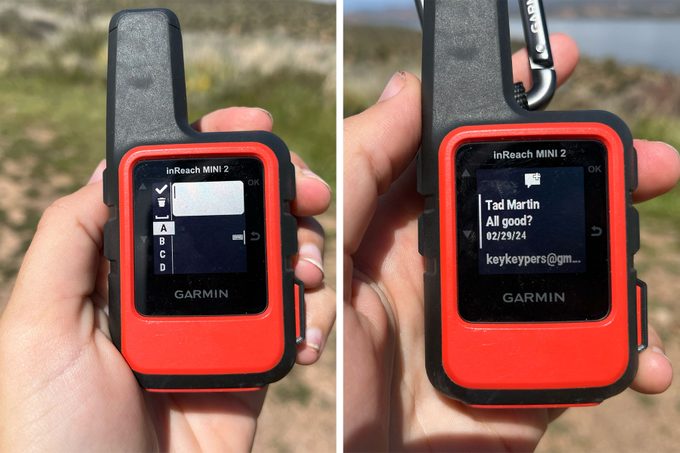
The Garmin inReach Mini 2 is Bluetooth-capable, so it can connect to your cell phone as long as it is in reach. Practically, this is a great feature, because it means that you can message from the Garmin Messenger app and avoid having to type messages on the tiny inReach device, which is very cumbersome.
“In that sense, the inReach basically becomes a satellite antenna for your earth-based mobile phone,” Noel says.
Users with Garmin watches can even check messages and initiate SOS from their watch (depending on the watch model), Mastic says, as long as they’re within Bluetooth range, which is about 30 feet.
The inReach Mini 2 is also equipped with ANT+ connectivity, which means it can connect to devices outside of the Garmin ecosystem. In my experience, ANT+ connectivity can be finicky, so it’s wise to pair devices before heading out on your adventure.
Small and Compact
Weighing just 3.5 ounces and measuring just 3.9 x 2 x 1 inches, the Garmin inReach Mini 2 is one of the smallest handheld locator beacon devices available today. Its small size and light weight is meant to eliminate any deterrents to carrying the device, even for ultra-light backpackers, Mastic says. “This combination of size, weight, and battery life is best-in-market compared to the competition,” he says.”
Waterproof
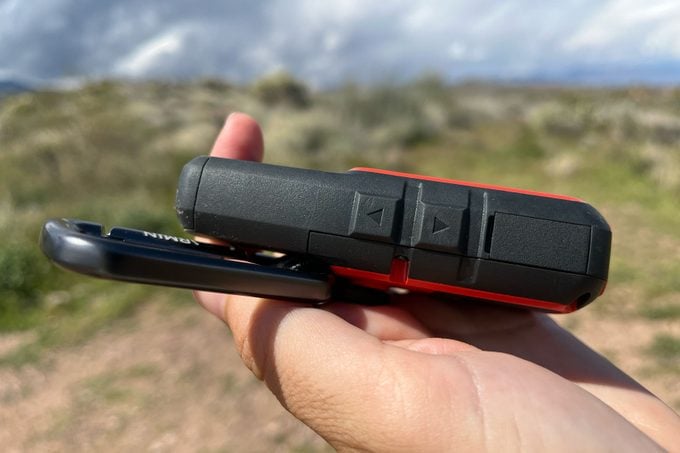
With an ingress protection (IP) rating of IPX7, the Garmin inReach Mini 2 features the third-strongest level of protection against water according to the standard scale. The 7 means the device is protected from temporary submersion in water. The X means there is no formal dustproof rating. That said, I haven’t had any issues with dust altering the function of the device at any point.
Impact-Resistant
The inReach Mini 2 is rated MIL-STD-810 impact-resistant, which refers to the U.S. Department of Defense Test Method Standard for Environmental Engineering Considerations and Laboratory Tests.
How We Tested It
I bring my Garmin inReach Mini 2 on almost every hike. If the adventure involves me hiking alone, going into the backcountry or going to any location where cell service is unreliable, the inReach Mini 2 is clipped to my pack. It might be overkill in some scenarios, but when you’re playing with wilderness, being safe rather than sorry is always the answer.
I have used the Garmin inReach Mini 2 to navigate the backcountry by pre-loading routes, and I have used the TracBack feature when I got off trail in the Superstition Wilderness on a solo 15-mile hike. I’ve also used it to contact my partner to let him know that I would be late; once because I got lost and once because I had to shelter from bad weather mid-hike. The peace of mind this device gives me while on trail, and my partner while waiting for me to return, is worth the investment, not to mention all of the other features.
Pros
- Small and lightweight satellite device with long battery life
- Two-way satellite communication that uses Iridium network and connects to GEOS
- TracBack navigation and live location sharing
- Pre-load up to 100 GPS routes; store up to 1,000 waypoints and locations
- Bluetooth-compatible; messenger app available on iOS and Android phones
- USB-C charging with sunlight-readable display
- Impact-resistant and waterproof in temporary immersion situations
Cons
- Very difficult and cumbersome to type on the device itself (recommended to type on Garmin Messenger app)
- Depending on where you are (i.e., in a canyon), messages may take a long time to send
- Subscription required for messaging and SOS contact
- High initial purchasing price ($400)
FAQ
What can you do with Garmin inReach Mini 2?
The Garmin inReach Mini 2 allows you to utilize Iridium satellite networks for two-way communication in places where cell service and Internet aren’t available. You can message people through the Garmin Messenger app by pairing the inReach to your phone via Bluetooth, or you can message from the device directly. With the inReach, you can also trigger an SOS alert for emergency rescue, navigate with GPS, and share your current location and activity with others.
Is the Garmin inReach Mini 2 overkill for a casual or beginner user?
I’m of the mind that you can’t be too safe or too prepared in the wilderness. In reality, if you are sticking to maintained, front-country trails where cell service exists, you probably don’t need a satellite communication device. The second you enter backcountry territory, however, I believe a personal sat phone and GPS device are critical to ensuring your safety and avoiding unnecessary rescue situations.
How does two-way satellite communication work?
The Iridium network is used by a host of companies, including Garmin, Zoleo, Motorola and even Apple. It’s “a great system, well-respected, and well-maintained,” according to Noel.
As for how the satellite network operates in terms of two-way communication, Noel explains that, “A signal is sent by an Iridium compatible device to the nearest Iridium satellite. The signal is then returned to earth to fixed ground stations where the signal is transmitted to recipients. There is no need for cellular or WiFi connectivity.”
“The best use is just staying in contact,” he adds. “Telling my wife I want to ride my mountain bike for another three hours is better than not showing up for three hours, which would make her crazy and worried. Having reliable comms can, in fact, prevent false rescue scenariosor a lot of worry.
What if your device is not getting a signal?
Importantly, the system is not infallible, Noel warns. “You must have a clear view of the sky and satellite,” he says. “Canyons, mountains, trees and other obstructions can limit signal transmission. Where the satellite is overhead has a big impact, and LEO satellites move across the sky.”
Noel emphasizes, “The satellites are near-perfect. The devices are near-perfect. But the scenarios where the two try to connect may not be perfect.”
So what to do in this situation? Wait, Noel says. Iridium satellites are not geostationary; they move across the sky. You may need to wait 10 minutes for your message to send or an hour or more, but eventually, the nearest satellite will shift in the sky and create a better connection.
The underlying advice here is to stay calm, Noel points out. If you’re not injured, you can try to make your way to higher ground where you might get a better signal, or you can wait where you are for the satellite to shift.
In the event of an emergency, how long is the emergency response time?
“Emergency services response times in a wilderness setting can vary due to a large number of circumstances, such as the nature of the emergency,” explains Mastic. “For example, a hiker that severely sprains his ankle but has adequate shelter, food, water and warmth and can wait until daytime or better weather is not considered an urgent case, whereas a hiker that is experiencing chest pains and shortness of breath will be considered an urgent evacuation.”
Other factors that impact response time include the time of day, the weather, the location of the patient and what resources the local emergency services have at the ready. For instance, is there a helicopter and team available for an air evacuation, or will the responding team be traversing on-foot to the patient?
Additionally, “Backcountry response times are significantly longer than what most people will be used to in urban or suburban settings, where EMS can arrive in a matter of minutes,” Mastic says. “In the backcountry, the quickest response times may be within a couple of hours, but six to eight hours isn’t an unreasonable response time in most situations.”
“Depending on the severity of the issue, time of day, and/or weather conditions, it could even be the next day before a rescue team can reach the patient,” he continues. “It is for this reason it is incredibly important for even day hikers to carry the ten essentials, just to be prepared in-case of an issue that will force them to spend a night in the backcountry unexpectedly.”
What Other Experts and Buyers Had to Say
The general expert consensus is that the Garmin inReach Mini 2 is one of the best personal satellite communicators out there, largely thanks to its GPS capabilities and small, compact size.
“I’ve owned the Zoleo for a few years now, and if I had my choice, I’d purchase the InReach Mini 2 over the Zoleo,” Mastic says. “I haven’t had any issues with the Zoleo; I rather like its simplicity and the service has been great. [I have] zero issues with Zoleo. The InReach Mini 2 is just smaller, lighter, and can provide a better battery life. Plus, I now own a Garmin smartwatch, and it’d be nice to take advantage of additional functionality of multiple devices in the ‘Garmin ecosystem’.”
On consumer forums like Reddit, users often gush over the inReach Mini 2 for its ease of use and lightweightness. Customers love the peace of mind it provides, even when all is safe. The common sentiment is, “If you can afford it, buy it. You won’t regret it.”
Some in-depth reviews by other backcountry hikers note that there are, indeed, better options for an all-in-one GPS and satellite communication device. The Garmin GPSMAP 66i handheld device is offered up as an alternative, but the tradeoff is the price and the fact that the 66i is huge and heavy in comparison to the Mini 2.
Garmin inReach Mini 2 vs Garmin inReach Mini 1
The inReach Mini 2 and inReach Mini 1 look almost exactly the same. They are nearly identical in size, weight, and appearance, although when powered on, there are notable differences in the interface. The Mini 2 has a much cleaner interface and a higher-resolution display. But that’s not one of the important differences.
One of the primary improvements of the Mini 2 over the original Mini is the extended battery life. The original mini could last for up to 90 minutes with 10-minute live tracking enabled, whereas the Mini 2 can last up to 14 days with 10-minute live tracking enabled. In all other scenarios, the Mini 2 is capable of lasting longer than the original Mini. (Both last for up to one year if powered off.)
The Mini 2 supports more memory than the original Mini, too. It’s capable of storing 100 courses, 200 activities, and 1,000 waypoints; the original can store 20 routes, 500 waypoints, and a single activity track.
Perhaps the most important update to the Mini with the introduction of the Mini 2 is the additional sensor suite. While the original Mini is equipped only with GPS, the Mini 2 is equipped with GPS, Galileo, QZSS, and BeiDou satellite sensors. Additionally, the Mini 2 features a tilt-compensated, 3-axle compass and a GPS compass while in motion; the original does not have a compass feature.
Final Verdict
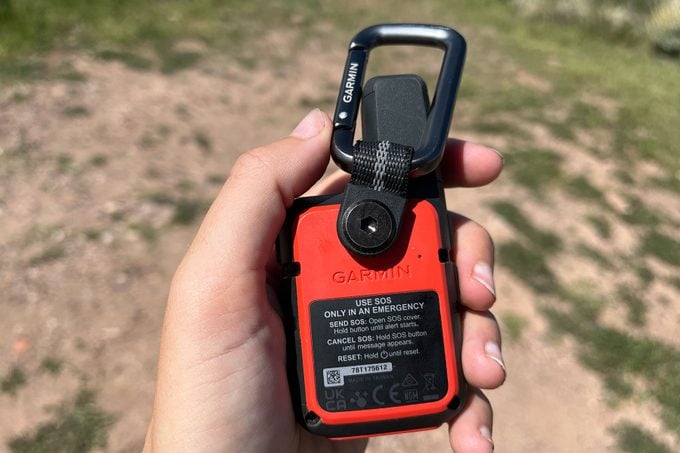
The Garmin inReach Mini 2 is a lightweight, compact, waterproof and impact-resistant device that provides two-way satellite communication, SOS functions and GPS navigation. It serves as an all-in-one backcountry communication and navigation device for hikers, backpackers, bikers, skiers, paddlers and anyone else venturing into remote locations. After using it myself and consulting with two experts in satellite communication and GPS, I recommend the Garmin inReach Mini 2 to backcountry adventurers.
Where to Buy the Garmin inReach Mini 2
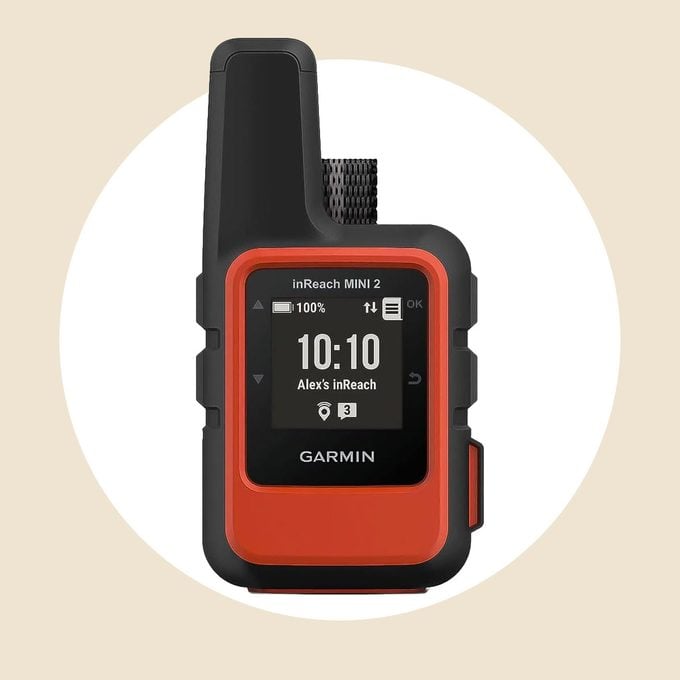 VIA MERCHANT
VIA MERCHANTWe Tried It
Garmin inReach Mini 2
The small but rugged satellite communicator provides global connectivity in the palm of your hand.
The Garmin inReach Mini 2 is available at a variety of retailers, including REI, Walmart, Backcountry, Huckberry, Tractor Supply, Dick’s Sporting Goods, Cabela’s and Bass Pro Shops. You can also get it directly from Garmin or on Amazon. It retails for a list price of $400.
Sources:
- Christophe Noel, professional Himalayan adventure guide and owner of Far Xplorer
- Tim Mastic, national park ranger and certified wilderness first responder
No comments